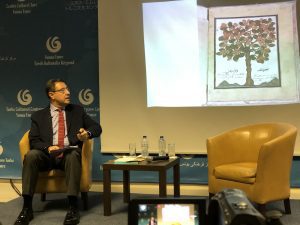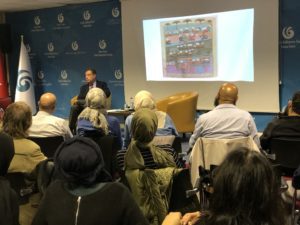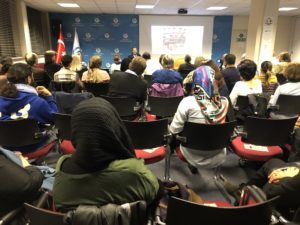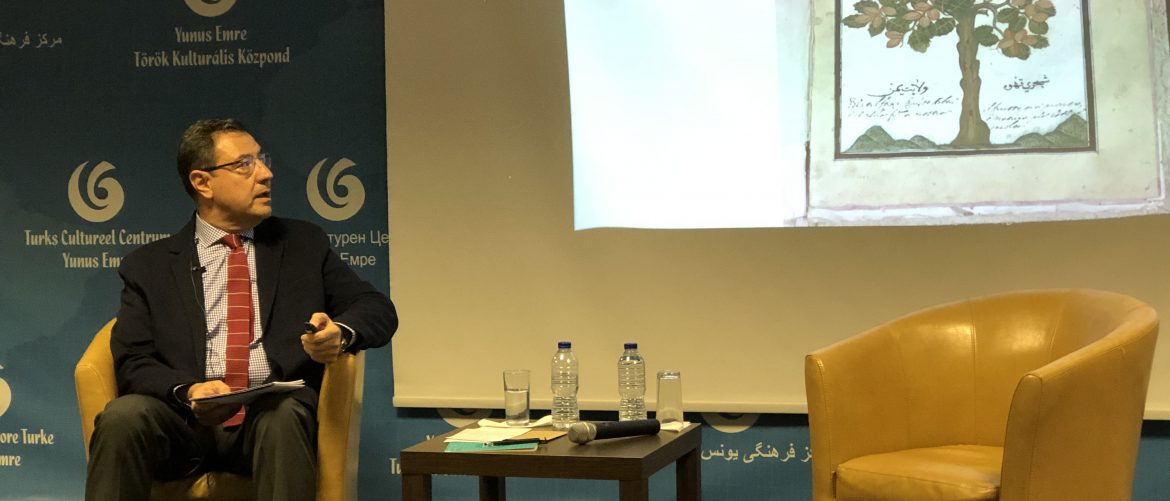Through series of events organised by Yunus Emre Institute in London showcasing the Turkish cuisine, the “A Pinch of Anatolia” project will take us on an exquisite thirteen thousand years historical food journey. On this journey, participants will experience a variety of satisfying tastes, workshops run by leading chefs, enlightening conferences and publications.
A Pinch of Anatolia made an official entrance on the 17th of October 2019 with a talk titled “Social and Cultural History of Coffee and Coffee-Houses in the Ottoman Empire” by Prof. Dr. Mehmet Kalpakli, held at the Yunus Emre Institute in London.
During the talk, the crowd was enlightened on how the Ottoman community came across coffee, the emergence of the coffee-house culture and how this had an influence on socio-cultural life and how it was reflected through the periods. Also discussed were the Sultans of the period and their approach on coffee and coffee-houses using the fatwas that were published at the time.
In his talk, Prof. Dr. Kalpakli mentioned that the Ottomans came in contact with coffee for the first time in 1517 when Yemeni governor Ozdemir Pasa gifted the coffee he had enjoyed in Yemen to Sultan Suleyman while in Egypt. Since this event, coffee began to be consumed at the palace and was very much enjoyed by all.
The first coffee house in the ottoman period was opened in Tahtakale in 1544 by two Arab entrepreneurs, replacing the Bozhane’s (place at which the fermented beverage ‘boza’ was served) and establishing communal entertainment centres. Through merchants, the coffee-houses began spreading into European cities including Venice, Paris, London and Vienna. The style of the European coffee-houses imitated those of the Istanbul coffee-houses, proving that the Ottoman coffee-houses were hugely influential.
Moreover, the talk looked into how the coffee-houses became a meeting point for people coming from different backgrounds and occupations not only for the consumption of coffee but later became spaces where one would engage in literature through poems and book reading, storytelling and literature conversations.
In addition, Backgammon, Mancala and Chess were amongst the games played in the coffee-houses, and shadow play and traditional Turkish story telling was first mentioned to be exhibited in the these coffee-houses. The talk helped audience visualise the different areas of the coffee-houses such as the ‘meydan’, ‘ayaklık’, ‘ocak’, ‘sedir’ and ‘başsedir’ by sharing miniature illustrations.
Audience were served Turkish coffee and Turkish delight before and after the talk.




